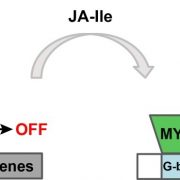
Different partners, different roles!
Research, The Plant Cell, The Plant Cell: In a NutshellYou et al. show that LEUNIG_HOMOLOG Facilitates Jaresponses via interactions with the histone acetyltransferase HAC1 and the Mediator complex coactivator MED25. Plant Cell https://doi.org/10.1105/tpc.19.00115
By Yanrong You and Chuanyou Li, Institute of Genetics and Developmental Biology, Chinese…
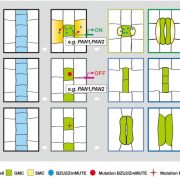
Plant Science Research Weekly: October 11
Blog, WWR Full PostThis week’s Plant Science Research Weekly is guest edited by Arif Ashraf. He is a postdoc at Facette lab in the University of Massachusetts Amherst and his research focus is deciphering the asymmetric cell division during stomatal development. He is working as an ASPB ambassador, Plantae Fellow, Co-founder…
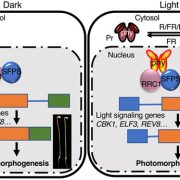
Coordinated regulation of pre-mRNA splicing by the SFPS-RRC1 complex to promote photomorphogenesis ($) (Plant Cell)
Plant Science Research WeeklyPhytochromes are a family of red/far-red light photoreceptors, which positively regulate photomorphogenesis upon red-light perception. Photomorphogenesis is driven by light-induced global transcriptional reprogramming, of which phytochromes are one of the most important regulators. In addition to transcriptional…
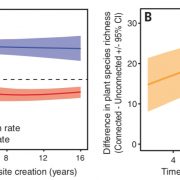
Ongoing accumulation of plant diversity through habitat connectivity in an 18-year experiment ($) (Science)
Plant Science Research WeeklyDuring the course of time, we have realized the importance of biodiversity for the maintenance of the ecosystem. However, the world has already been fragmented in small parts which resulted in a huge loss of habitat and threatening to biodiversity. Habitat connectivity, which means the degree to which…

A phyB-PIF1-SPA1 kinase regulatory complex promotes photomorphogenesis in Arabidopsis (OA) (Nature Communications)
Plant Science Research WeeklyCONSTITUTIVE PHOTOMORPHOGENIC 1 (COP1) is one of the best characterized E3 ubiquitin ligases with broad roles as a central repressor of light signaling in plants to cancer biology in mammals. In plants, COP1 interacts with SUPPRESSOR OF PHYA-105 1 family members (SPA1-SPA4) and forms a stable COP1/SPA…

BZU2/ZmMUTE controls symmetrical division of guard mother cell and specifies neighbor cell fate in maize (OA) (PLOS Genetics)
Plant Science Research WeeklyStomatal development has been studied thoroughly in the dicot model plant Arabidopsis thaliana, but stomatal development fundamentally differs between dicot and monocot for the subsidiary cells, a pair of dumbbell-shaped cells adjacent to the guard cell, formation. In this study, Wang et al., identified…
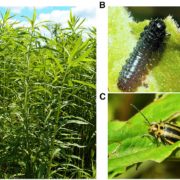
Insect herbivory selects for volatile-mediated plant-plant communication ($) (Current Biology)
Plant Science Research WeeklyPlants release volatile organic compounds (VOCs) in response to insect herbivory. The potential for VOCs to serve as diffusible signals has long been recognized. For example, VOCs can signal neighbors to prime for defense, signal distant parts of the emitting plant, and even attract predatory insects…
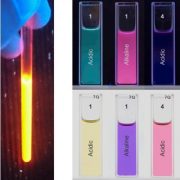
Auronidins are a previously unreported class of flavonoid pigments that challenge anthocyanin biosynthesis evolved in plants (OA) (PNAS)
Plant Science Research WeeklyPlants produce pigments as a protective strategy against biotic and abiotic stress. In angiosperms, anthocyanins are the main flavonoids that play a role in this function. As the early-diverging land plant, Marchantia polymorpha also produces red pigments in response to environmental conditions, it was…
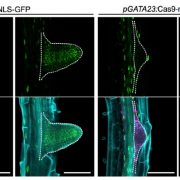
CRISPR-TSKO: A technique for efficient mutagenesis in specific cell types, tissues, or organs in Arabidopsis ($) (Plant Cell)
Plant Science Research WeeklyThe ability to introduce base-specific changes through CRISPR/Cas9 gene editing has given scientists fantastic tools with which to understand and modify the genes that control plant development and physiology. New tools and refinements to this toolkit are being developed rapidly. In this new work, Decaestecker…

